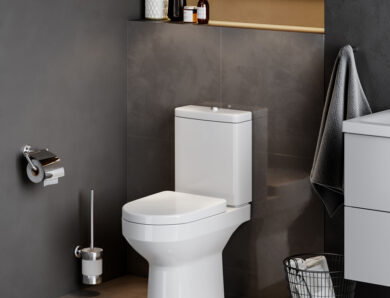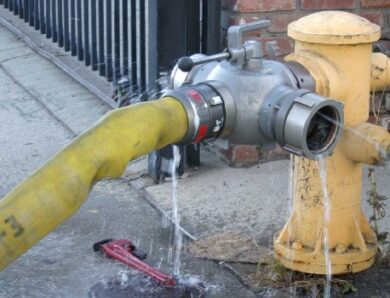Some secrets about that, how to choose the right roofing screw and its dimensions
Most people involved in building their own homes believe, that it is enough to buy a high-quality roofing material and this will be enough to achieve an excellent result. At the same time the quality of accompanying roofing elements is not taken into account, such, as self-tapping screws. From the quality of screws, which are attached to the metal, depends on the quality of roofing work.
Self-tapping screws are just as long-lasting, qualitatively laid, strong roof. This element accounts for almost all the dynamic load as when laying the coating, and in the process of its operation. Therefore, it is necessary to take seriously and responsibly the choice of fasteners.
What should be the roofing materials
The surface of the self-tapping screw must be treated with a special coating, which prevents corrosion, as well as painted with powder paints. The hat is multicolored, so pick up the color of the hat to match the metal tiles, is not a problem, therefore fastenings are practically imperceptible. However, applying paint to the hat also plays a practical role - it significantly increases the service life of the screw, preventing its corrosion.
Self-tapping screws, usually, are made of stainless alloy steel. Tightness and structure of a tile sheet, in the place of its attachment to the lattice, depends on the sharpness of the sharpening tip of the mount, from the quality of steel, used in its manufacture.
The strength of the material is also important. Significant wind load affects the sheets of metal. This load is transmitted to the screws, and already quite loaded. Manufacturers of quality fasteners, when testing their products, considered as static load (from the weight of metal tiles), and dynamic (created by external factors).
Self-tapping screws are suitable for fastening the roof, must be able to withstand such loads:
- 20 thousands of oscillations of roofing material, laid at an angle 5 degrees;
- 2 thousands of oscillations at a 10-degree slope of the roof;
- 100 fluctuations in inclination 15 degrees.
How to choose a really good mount
The quality of the self-tapping screw can be easily checked with the help of ordinary pliers. On high-quality fastening at compression of a washer paint does not burst, and the rubber gasket remains firmly in place.
There is a wide variety of fasteners in the construction market, but you should choose only those screws, on the hat of which the manufacturer has a special marking (brand). A good quality product must have a vulcanized rubber gasket, close to the surface of the element.
Cheap self-tapping screws are usually equipped with low quality rubber, which at temperature fluctuations quickly lose elasticity and crack in a couple of seasons. The loss of elasticity of the gasket leads to the formation of leakage and the appearance of traces of rust near the attachment of roofing material.
Now the leading manufacturers of metal tiles, as component materials, elements for its fastening are included. For this reason, the warranty on the roofing material is valid only when using complete self-tapping screws during installation.
Types of sizes of fastening materials
There are a number of standard sizes of self-tapping screws for fixing roofing materials, which are followed by most leading manufacturers:
- standard length 28 or 35 mm with the same diameter for both types 4,8 mm These fasteners are used, mainly, for attachment of sheet roofing materials to a lattice from a tree;
- length 20 mm with the outer diameter of the cap 4,8 mm Used to connect roofing sheets to each other;
- roofing fasteners lengths 50 or 70 mm with a standard outer diameter 4,8 mm Mainly needed to secure selected parts.
It will be useful to know, that the mass of a thousand screws measuring 28 x 4.8 mm is equal to 5,23 kg.
Attaching the roof
The metal tile is fixed on the lattice in the lower third of the sheet, that is, at the points of the closest fit of the sheet to the support element. For this purpose it is recommended to apply roof fastenings from metal. It is recommended to fix a couple of centimeters below the steps, taken as a guide.
The space between the roofing material and the fastening material cap must be completely filled with gasket, deformable when screwed and completely closes the free areas, thereby preventing the ingress of moisture. So, due to the vulcanizing properties of rubber, a reliable connection and completely tight. Fasteners are best suited for this work, whose length does not exceed 28 mm.
It is best to use a screwdriver to facilitate the work.
Calculation of the number of fastening structures
The metal tile is attached by the lower part to a lattice by means of roofing self-tapping screws, at the point of the closest fit of the sheet to the surface of the lattice.
To calculate the required number of fasteners on each sheet of metal tile, you need to decide on the source data.
As an example we can take:
- roof area - 150 sq. meters;
- the lattice is made of boards in the size of 30-x150 mm;
- the length of the roof slopes is 7.75 m;
- the width of the slopes is 10.2 m;
- necessary (pre-calculated) number of sheets of roofing material - 40 things.
At the same time it is necessary to use fastening elements of all standard sizes - 35 x 8,8 mm, 50-h4.8 mm, 20-h4.8 mm. It is necessary to calculate the required amount of each type of fastening.
For side joints of sheets it is necessary on 21 piece of products. With, for the total length of the joints 18 sheets will need 18-x21 = 378 screws with dimensions of 20-x4.8 mm.
The joints between the rows are fixed on 6 fasteners. For fixing 20 sheets will be needed, so, 6x20 = 120 pieces of fasteners with dimensions of 35x4.8 mm.
It will be necessary to fix one sheet on skates and eaves 3 self-tapping screw. All you need 120 pieces measuring 35x4.8 mm.
To attach the tiles at the ends you need to 22 self-tapping screw for each row. The total number of mounts 35x4.8 mm - 88 PC.
Professional roofers recommend fixing each sheet in its central part. So, on the letter will be additionally required 5 fastenings of 35х4,8 mm, and available 40 sheets of roofing material required 200 things.
The total number of screws with dimensions of 35x4.8 mm - 528 things.
Given during the wave, and also to take into account necessity of fixing of laths of end faces and eaves, skates and other roof components, it is necessary 360 self-tapping screws of 50х4,8 mm.
Summarizing the required number of fasteners of all sizes, the next figure will appear: 378 + 528 + 360 = 1266 things.
If you divide the resulting number of screws by the available roof area, it will come out, what on 1 sq m. roofing needs to be close 8 self-tapping screws.
This calculation can only be considered approximate, in real conditions the cost may be different. So, after the calculations, to the received expense it is necessary to add 10-15% stock.
Rules of installation of a tile
There are a number of rules for laying metal tiles:
-
the sheet in its lower third should be attached through the wave to the sole;
- the following rows are fixed in a checkerboard pattern and also through the wave. If the attachment step is wider, then the tile will vibrate in strong winds, which will lead to a gradual deformation of the roofing material, the appearance of knocks and noise;
- the side of the sheet should overlap along the top line of the wave;
- attachment on a lath of an end face needs to be carried out through everyone 500-600 mm;
- it is recommended to use self-tapping screws to attach the skate bar, on the hat of which there is a special mark. Attachment is also done through the wave;
- wave mounting is suitable for all types of roofing materials. This has been proven by many years of experience of professional roofers.
in addition, when calculating the required number of screws, it is necessary to take into account the width of the profile runs, the shape and angles of the slopes, the presence and number of chimneys, windows, snow holders.
Choosing the right size of fasteners is quite simple, if you have the necessary knowledge and specifics of using screws.


